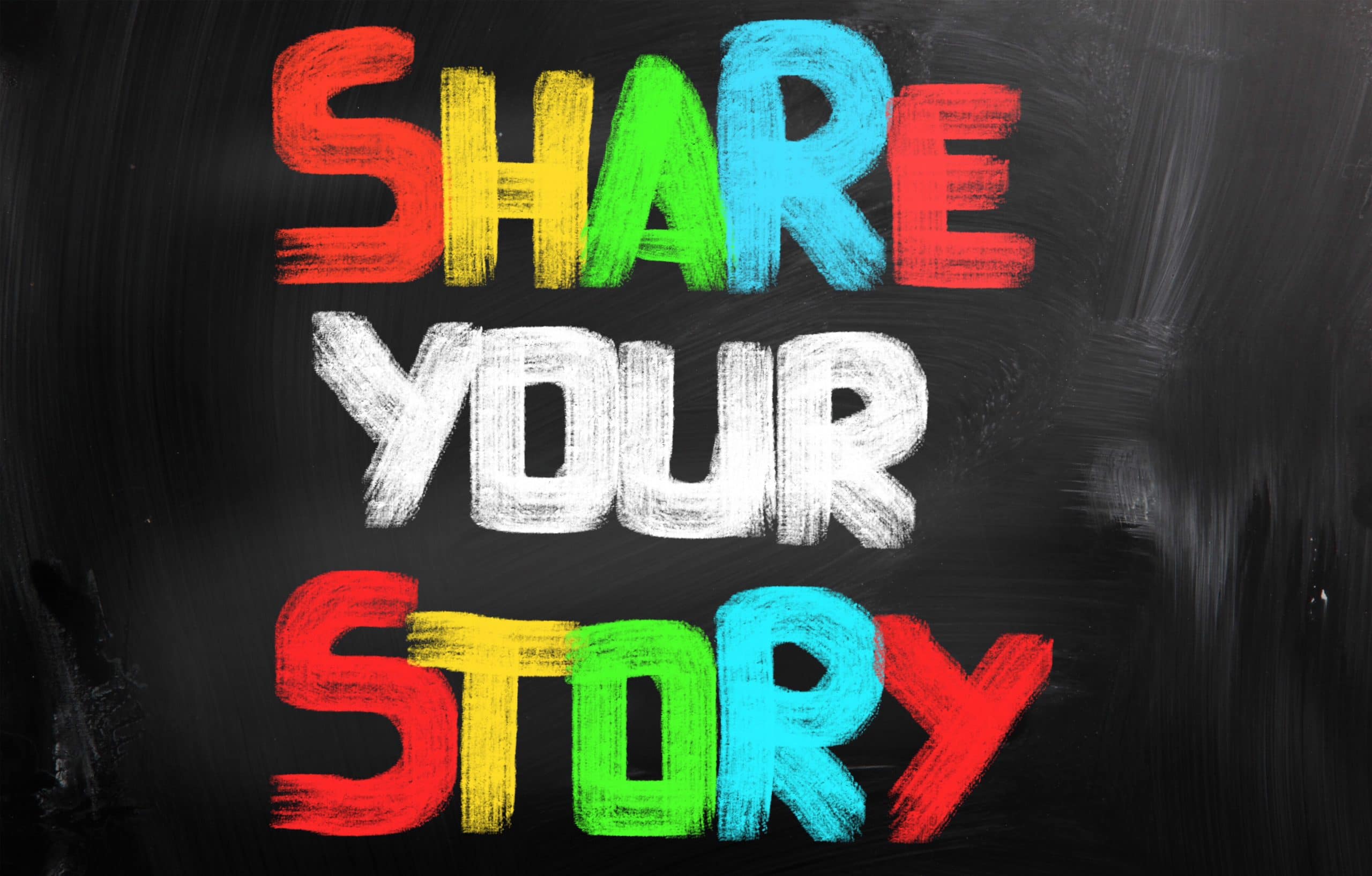
We’ve all been there: You are cornered at a conference and someone asks, “So what does your company do again?”
Either you stammer trying to come up with the simplest answer, or you’re hoping that whatever you usually say is the same thing your boss is saying in the opposite corner of the same conference hall.
Fear not. The confusion is not a you problem; it’s a messaging problem. And a lot of companies have it.
Creating cohesive and effective marketing messaging is one of the biggest challenges many companies face.
When working with a client, one of the very first places we start is examining their brand messaging. We’re looking for consistency. When done right, everyone in the company should be singing from the same hymnal on who the company is, what they do, and most importantly how their clients/customers benefit from using them. (More on that last point in a moment).
To address these pieces, we create one place where this all lives: a core messaging document, or sometimes known as a brand messaging document.
This document then guides everything you do from a marketing perspective. It serves as the foundation for all of your messaging. Everything you do moving forward will be anchored to your core messaging document, so you want to make sure you take the proper approach to building it.
With that in mind, here are the five crucial components of a great marketing messaging document:
1. Unique Value Proposition & Key Benefits
Right out of the gates this is where a whole lot of companies fall down. This is where you should describe, in just a few sentences, the unique, tangible value people get from your product or service. Make sure it also passes the “so what” test. It has to grab people’s attention and be interesting.
Your unique positioning statement should be benefits-focused. However, many stray from the path here also: They can’t wait to tell you about all their features and solutions instead of telling you the benefits they provide.
Here’s the reason features make for a less effective message than actual benefits: features center around your experience. But savvy marketers know a seller-centric playbook no longer works to build deeply engaged customers.
By focusing on your customers and structuring both your unique value proposition and key benefits to speak directly to what they are experiencing, you quickly address customer pain points. You can also then create an effective framework to build the rest of your messaging on.
Let’s take a look at an example.
Imagine you are a B2B tech company touting a revolutionary software poised to change the helping-employees-decide-where-to-get-lunch game. We could think about the difference between your features and benefits like this:
CORE MESSAGE EXAMPLES | IS IT A FEATURE OF BENEFIT? | WHY? |
Our tool has an easy-to-use drag and drop interface | Feature | This is a feature because it’s about the way your product functions, not the value it provides. |
Our tool is intuitive, easy to use, and will save you time | Benefit | Here we have zoomed out to think about the big picture and what your customers stand to gain by working with you. |
Since you’ll likely have too many benefits to wrap directly into a unique value proposition, often it will make sense to outline key benefits below the value proposition. This could be a sentence that supports each of them and how they resolve a potential customer’s pain point.
2. The Elevator Pitch
The elevator pitch is your 30-second response to the, “What do you do?” question and should fall directly out of the value proposition and benefits you outlined in the step above. Again, make sure you focus heavily on the benefits here. Why should the customer take time to care about what you do? But remember, this isn’t a sales pitch. It’s just a conversation with someone, theoretically in an elevator. Once they show an interest to know more, then you can get into the details.
There are lots of ways to build your elevator pitch. You can start with a question or offer up an example of success with a quick case study example. Regardless of how you approach it, the elevator pitch can’t be dry and full of jargon and complicated concepts. Answer the questions “What do you do?” and “What makes it unique?” And do it layman’s terms with words everyone understands.
There are lots of elevator pitch examples out there, including these from Hubspot, but the key is to be creative and succinct.
3. Boilerplate
This is the short 2-3 sentence description of who you are and what you do and again falls right out of the positioning statement. You find the boilerplate copy most frequently in press releases or short online directory submissions.
While this might seem dry and like busy work I’m giving you here, I promise it’s not.
Here’s the kicker on having boilerplate language: Companies that don’t have a written messaging framework clearly explaining who they are create internal chaos and external mistrust. Draft a boilerplate company description that is less than 100 words and clearly communicates your value. And then make sure that everyone in your company has it.
It should also include a call to action at the end that points readers to your website or maybe your social media channels.
Here you can see how CVS outlines who they are, what they do, and what sets them apart, all while centering the value they provide their customers.
4. Buyer Persona Pains and Your Solution
The buyer persona descriptions will likely be the largest part of your messaging document, but don’t let that scare you. In this section, start by thinking about who actually purchases your product, and listing out each of the buyer roles (i.e., marketing), and representative titles (i.e., VP Marketing, CMO, Marketing Director).
Remember to make sure you have talked to customers, researched buyers, and have a bank of information on who purchases and uses your solution in order to create messaging that resonates with them. Completing an exercise like this will help you keep your responses to your buyers’ pain points laser-focused and relevant.
Think about questions like these in your persona research:

To nail this section of your brand messaging document, create three columns. One for buyer goals/objectives, one for buyer potential pains, and one for impact of pains on goals.
Once you have addressed all of these, add in a new row at the bottom for your product or service. In the buyer goals/objectives column, list out your solution and how it addresses those goals and objectives. In the potential pains column, list out the impact you can have on resolving those pain points, and in the last column list out examples/case studies that prove these out.
Starting out with a typical B2B example, the beginning of this process will look something like this:
Buyer 1: Struggling marketer Stan is in marketing (his role) and he is a director (his title)
Struggling marketer Stan’s persona chart:
BUYER GOAL | BUYER POTENTIAL PAINS | IMPACT OF PAIN ON GOALS |
Generate a high volume of leads at a low cost | Budget is too small to generate the volume of leads I really need, not enough time in the day | Low budget means you stay conservative with lead generation choices and you generate a low volume of leads |
YOUR PRODUCT: Our solution makes lead generation faster and easier for marketers | YOUR PRODUCT: Our tool is inexpensive, generates huge ROI, and will automate previous manually handled lead generation processes to save you time | YOUR PRODUCT: Link to case study: Link to “How X Generated 40% More Leads with Our Product” |
Continue this until you have completed it for all your different buyer personas and you’ll understand how to address all your audiences.
5) Competitive Positioning
Last but not least, list out your key competitors, take note of their brand messaging, and write down what separates you from each.

A useful exercise to dig into how you are different from your competitors is to go back to those awesome benefits you outlined in step 1 – your unique value proposition and key benefits.
How does each of those benefits compare to what your direct competition offers? Are they similar? Do you offer something totally different?
By really wrapping your head around the value you provide over your competition, you can hone in on three important details:
- What content to write
- What aspects of your business to focus on
- How to direct your marketing strategy to effectively set yourself apart from the competition.
All this thanks to your expertly crafted core messaging document.
With a solid messaging guide containing these five key components, you are now ready to move forward and tackle anything that comes your way, from a networking event to marketing campaign.
Focusing on these five areas will help you craft messaging that can guide your content creation strategy and campaign planning for quarters to come.
If all of this seems a little bit overwhelming, or you just want us to check your work, we’re happy to help.
Editor’s Note: This post was originally published in May 2010 and has been thoroughly updated for comprehension and accuracy.




